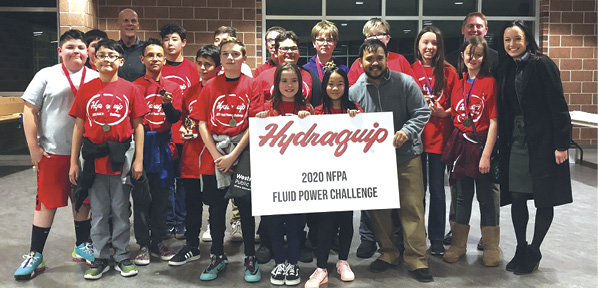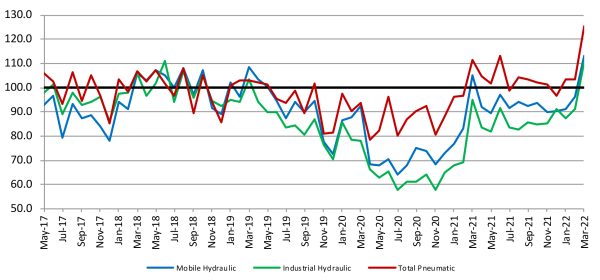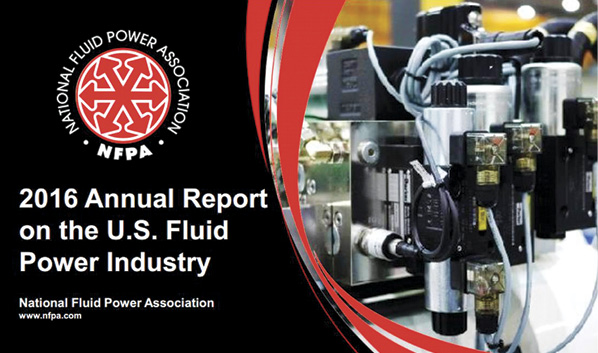NFPA Joins ARM
By Eric Lanke, NFPA President/CEO
Three major government funding initiatives for fluid power research have so far come out of the fluid power industry’s successful partnership with the Center for Compact and Efficient Fluid Power (CCEFP). One is the hydraulic research program for off-highway vehicles at the Department of Energy. The second is the inclusion of soft robotics as a topic of interest in the Emerging Frontiers in Research and Innovation (EFRI) program of the National Science Foundation. And the third is the selection of the Advanced Robotics for Manufacturing (ARM) Institute by the Department of Defense as our nation’s newest Manufacturing USA Institute.
With so much going on it’s easy for NFPA members to get lost in the alphabet and federal agency soup. That’s part of why NFPA recently joined ARM as a non-profit, supporting member, and why I recently attended its first member meeting in Pittsburgh. I wanted to learn more about the opportunities for fluid power research in ARM, knowing that something in the neighborhood of $80 million has been allocated for industry-led, university-supported research projects that will help commercialize technologies that support the growth of advanced robotics and automation in U.S. manufacturing.
Prof. Eric Barth of Vanderbilt University, a deputy director of the CCEFP with a focus on human-scale fluid power technologies, has been a vocal presence inside of ARM since its initial formation. He has helped ARM realize that fluid power is an essential, and frankly not well-understood, actuation technology for collaborative robots in the manufacturing workplace. In its mission and strategy documents, ARM seems committed to the growth of collaborative robot technology, especially for the small- to medium-sized manufacturing industry; environments that have had a difficult time reaping the advantages of automation because of their relatively low lot sizes. Fluid power, especially with adaptive control systems, could better facilitate the rise of that technology in these spaces, and therefore fluid power represents an area that could receive research funding through ARM.
But frankly, that won’t be easy. ARM has just released its first call for project proposals, and their focus will be on projects that help them achieve one of the following key strategic priorities:
- Identification and packing of objects
- Unloading and unpacking of objects
- Transport and delivery through a complex, crowded floor
- Inspection of non-standard materials
- Tracking and traceability of components
- Manipulation of compliant materials: food, textiles, wire harness, composite
- Surface treatment: sanding, painting, polishing
The good news is that these priorities are application, not technology, based. They are the challenges that ARM’s industry members told them, through a roadmapping process, that they needed the most help with. ARM is now open to technology development proposals that will help them achieve these priorities. That at least doesn’t exclude fluid power from participating.
The bad news is that although fluid power hasn’t been excluded, no specific preference for fluid power has been given. What will drive the selection of research projects is the quality of the proposals submitted, and the organizations doing the submitting must be the members of ARM – among which there are currently very few fluid power companies or fluid power-focused universities.
At the ARM member meeting, I participated in a number of matchmaking sessions. These were meetings designed to bring potential research partners together for the purpose of formulating initial proposals to ARM. And these discussions were very encouraging. The ARM membership currently consists of a nice mix of manufacturing end-users, automation and robotic technology providers, and academics with relevant skills and lab facilities for the projects. The winning proposals will likely come from exactly such teams – a manufacturer with an automation or robotic challenge, a technology provider willing to take their systems to the next level, and a university partner to help house and advance the project. I was present when one such collaboration came together that included fluid power as one of its essential components. If fluid power is to receive research funding from ARM, the construction of more such collaborations is going to be necessary.
Concept papers for ARM’s first project call were due in November, but they expect to be issuing new calls every six months or so. If there are any NFPA members (or University Education Partners) who are interested in helping out, or at least learning more, please contact me at elanke@nfpa.com or 414-778-3351. Knowing that government support of fluid power research projects is currently our best way of ensuring the sustainability and growth of our industry’s academic infrastructure, I’m happy to play the matchmaker if I possibly can.





